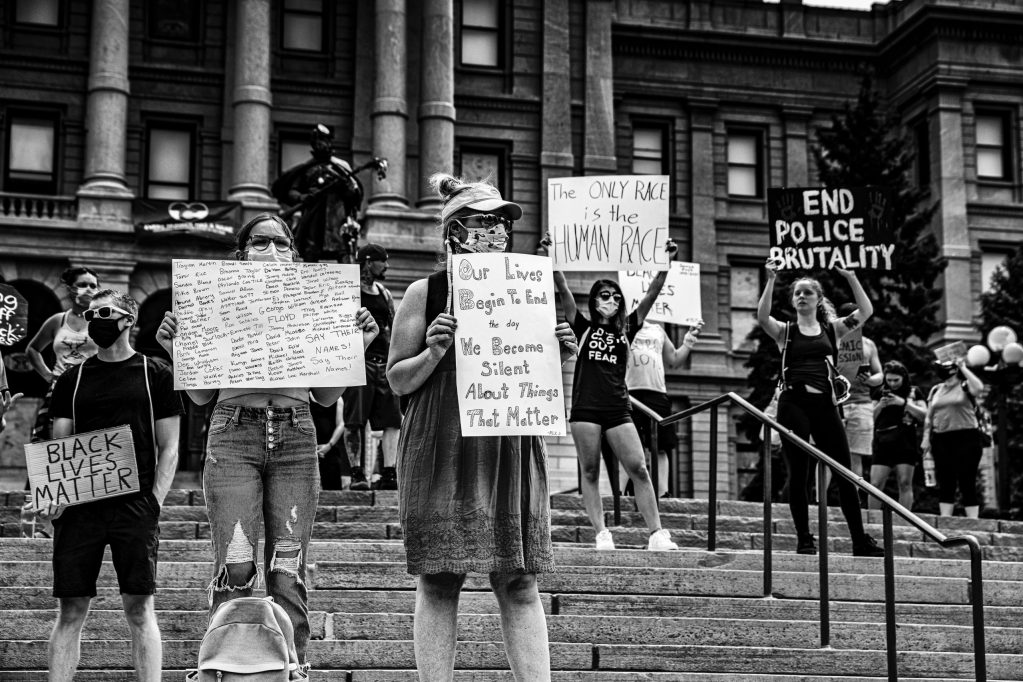This is an Eval Central archive copy, find the original at cense.ca.

Change is everywhere it seems and while it can be said it is the only constant what we are seeing is an increase of change on a massive scale.
However, as the protesters across the United States, Canada and beyond are making clear: there is a big difference between talk of change, the process of change, and the outcome of change efforts. Evaluation can be a powerful tool to help us distinguish these things together as they can be conflated too easily.
Here are three things to consider when seeking to make these distinctions that can be applied anytime, but become more salient when focused on large-scale change efforts where much is happening simultaneously.
Document your baseline
A baseline is a starting point and while it would be great to have data from yesterday, if we are seeking to gather change-related data today that means this is your baseline. Too often baselines are forgotten because any effort to measure or track change needs to answer the question: change in relation to what?
How? Pick the most convenient, proximate moment to gather data. Aim to capture descriptive data of what is happening, time data (see below), and also any numerical aspects of the phenomenon you can. These can be such things as cases of something, number of participants involved, descriptions of the current situation. From this, you can later build a backstory that can help lead to the present moment.
For example, George Floyd was arrested and killed by a police officer on May 25, 2020. It is possible to use that as a baseline for what came next and later build the backstory by showing the many different incidents of a similar nature that may have happened locally, nationally, and beyond to illustrate historical patterns of things like police behaviour, protests, violence, racism or otherwise depending on what changes one seeks to make.
Gather real-time data whenever possible
It’s tempting to gather data after an event (e.g., protest, policy decision, etc.) has taken place (and sometimes that’s unavoidable), however, there is much evidence that we lose perspective and critical information in our post-event reflections that often fail to capture critical details of what actually happens.
How? During the COVID-19 pandemic we have seen many examples of this with live reports from doctors, nurses, and other caregivers working the front-lines of healthcare responses. We’ve seen infectious disease specialists giving interviews on television, exchanging data and opinion via email and Twitter, and through first-hand accounts of citizens dealing with the various policy decisions made. These micro-narratives can make for a strong experiential case for what is happening and what effects the event is having. Reviewing social media posts, proposing online diaries (e.g., selfie video testimonials) or using ‘speakers corner‘ sites or physical booths to allow people to document what they feel, think, say, and do in real-time will provide a more accurate and adaptive means of understanding what is happening as it happens, rather than just retrospectively.
Timestamp your data
Time is a critical contextual factor that can help us understand what happens, why it happens when it does, and to better make sense of the outcomes. The Greeks classified two types of time: Chronos (‘clock time’) and Kairos (‘relative’ time) . Determining what time (as in hour, date etc..) can help you to organize things in chronological order and see relationships between change-making efforts. Relative time — proximity — helps us see the effect of certain activities in relation to others.
How? Modern recording tools often have this built into them, but for the evaluator it is important to record when things happen and document the sequencing of things. Big events like the two we’ve used — the race riots and pandemic — have so many moving parts that it quickly gets difficult to remember retrospectively what happened in what order. This is critical if we want to develop a theory of change or explain what happened as part of the change process.
These three things are all simple and can be done with tools like phone cameras and gathering things in a spreadsheet. More sophisticated ways are available as well and, ideally, there is a method and plan prior to a change initiative taking place. But as we’ve seen, sometimes change just happens. If it does, you’ll be ready to capture it and learn from it before it comes to pass and be able to tell if it doesn’t.
Stay and be safe.
If change is something you need help understanding and documenting, don’t hesitate to reach out and contact us. Evaluating, supporting, and guiding change efforts is what we do.